Everything you need to know about spaghetti squash, including buying tips, varieties, and how to cook it in 4 different ways.
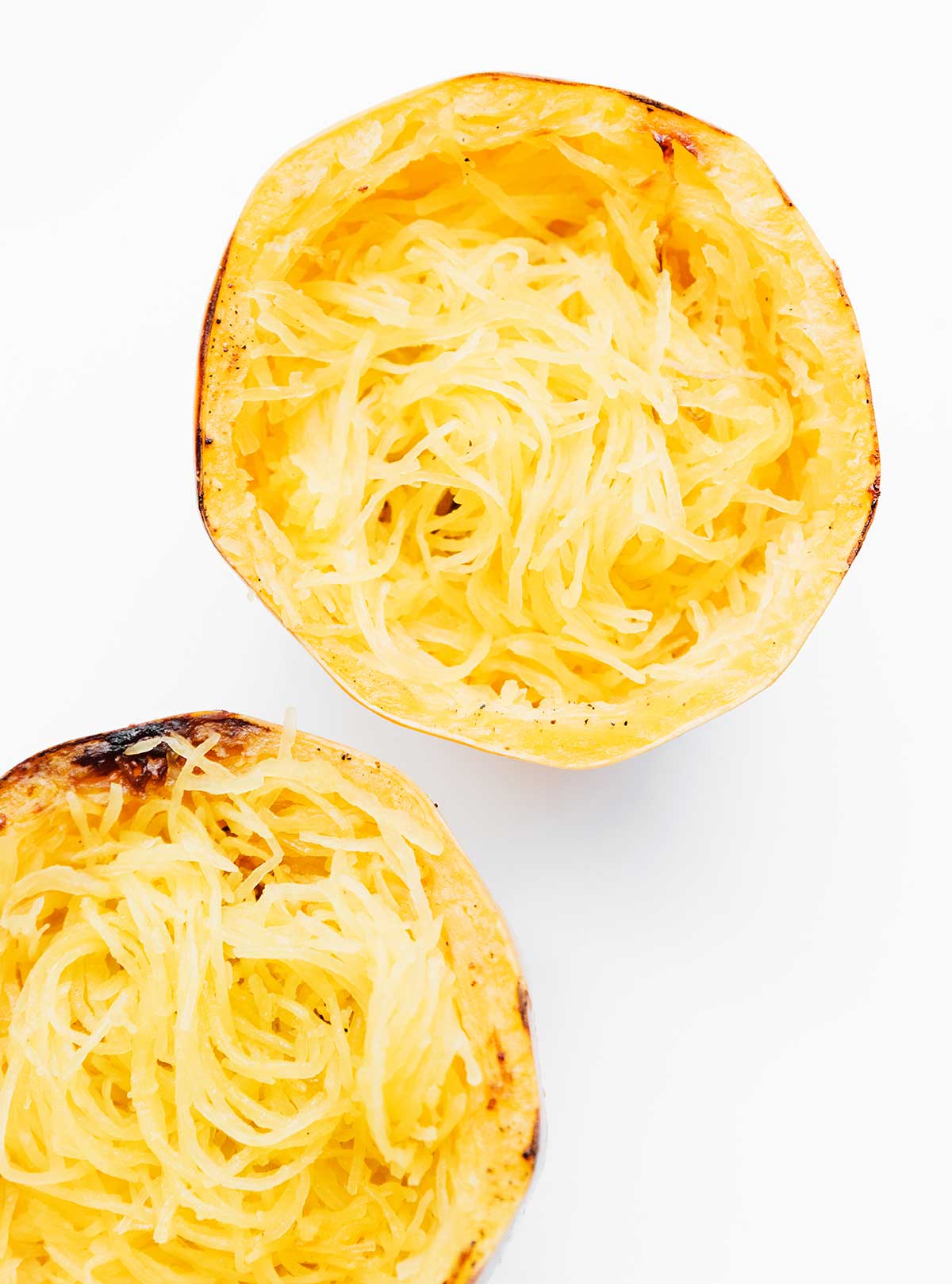
I remember my first spaghetti squash experience. I’d previously thought, “meh, I guess I should try this stuff out but…how cool can it really be?” But then when it came time to rake the inside to separate the spaghetti strands, everything changed. It was pure, cathartic, spaghetti squash joy.
You suddenly feel like the chef of all chefs and as you gently rake at it with a fork and spaghetti is just magically appearing in front of you and there’s no end and the idea of ever cooking normal spaghetti again has instantly become so obsolete…
So in case you’re curious about this low carb vegetable we call spaghetti squash, read on for everything you need to know about it!

How to pick spaghetti squash
Choose a spaghetti squash that is heavy for its size and is free of blemishes or soft spots. The yellow-er it is, the riper it is!
Though this is technically classified as a winter squash, with a season spanning autumn and winter, you’ll likely be able to find this squash year round due to its growing popularity.
And while it’s almost universally known as spaghetti squash, you may also hear it called “vegetable spaghetti”, “noodle squash”, or “vegetable marrow”.
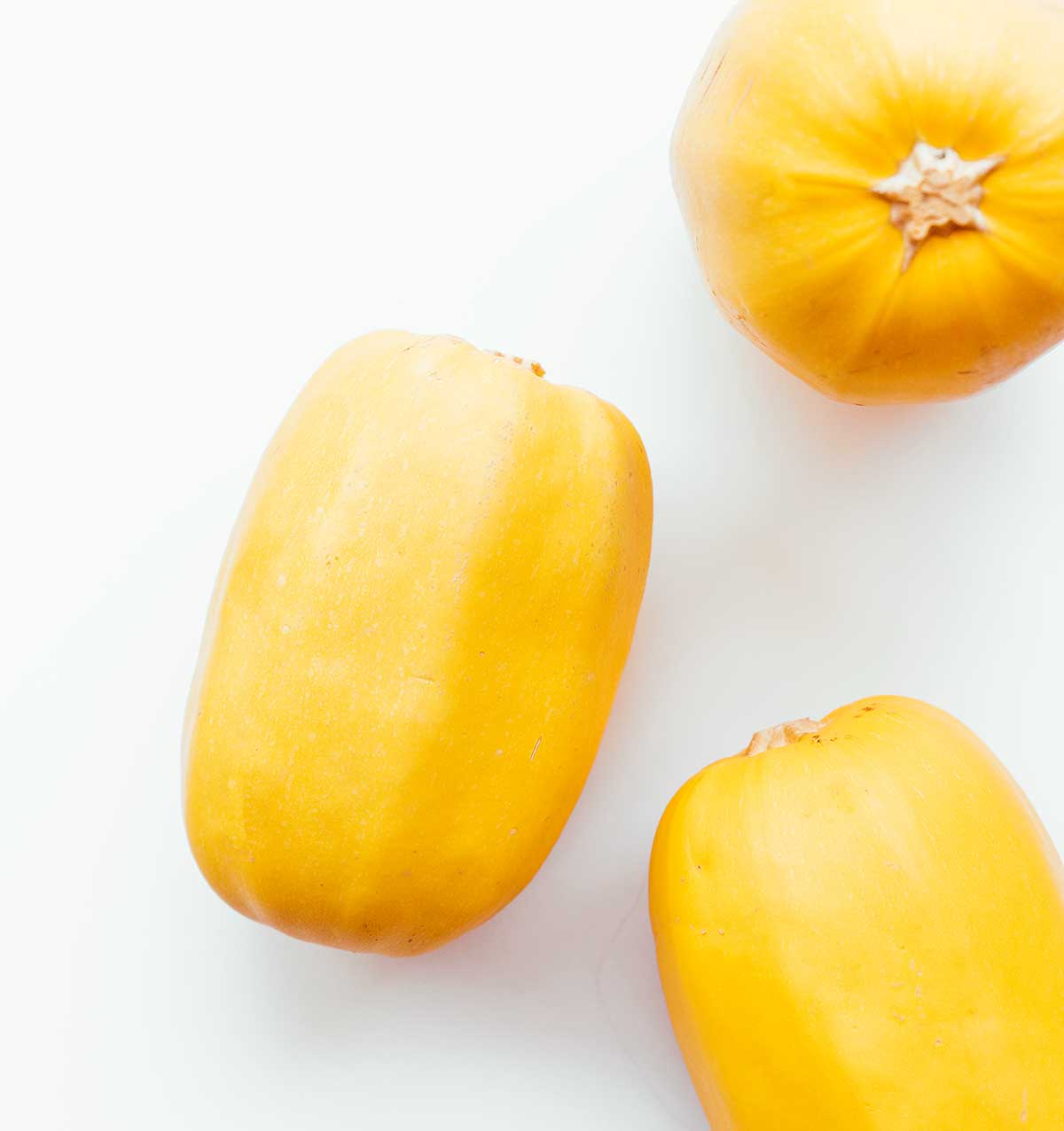
How to Cook Spaghetti Squash
There are a few ways to cook the squash, but first you’ve got to prepare it correctly. And if you’ve ever made spaghetti squash, you probably did it wrong.
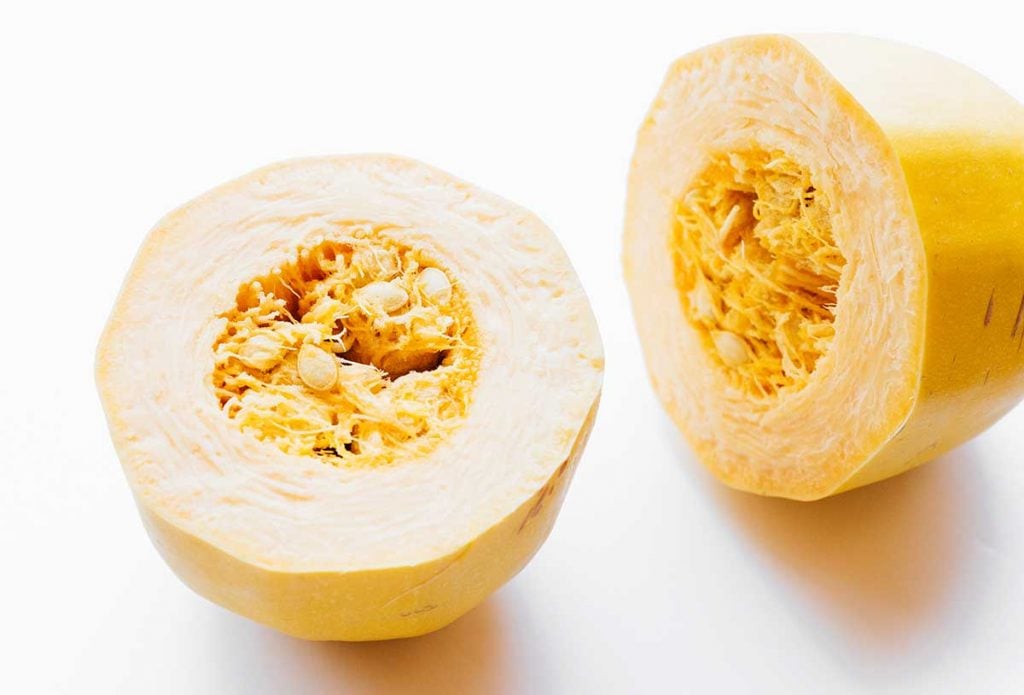
Rather than cutting lengthwise, cut horizontally (hamburger style). You’ll get longer spaghetti strands!
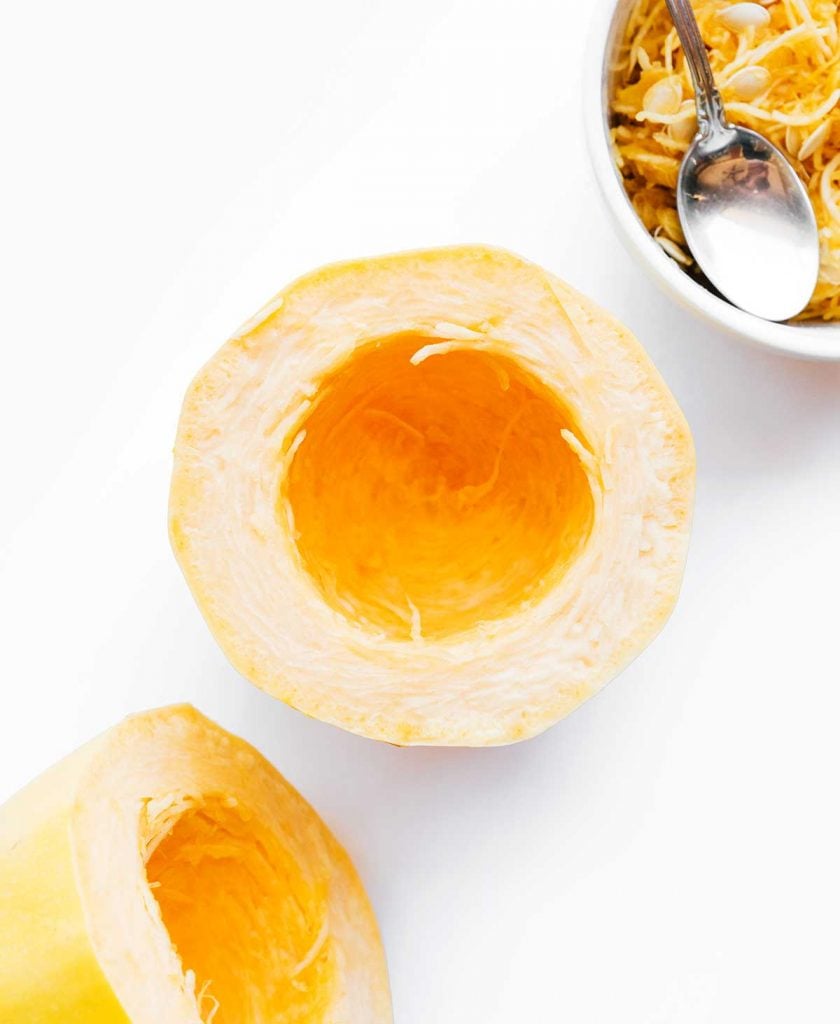
Then simply scoop out the seeds and gunk, leaving the thick yellow flesh intact. Finally, prick the outside of the squash with a fork to help the heat penetrate the squash, promoting more even and quick cooking.
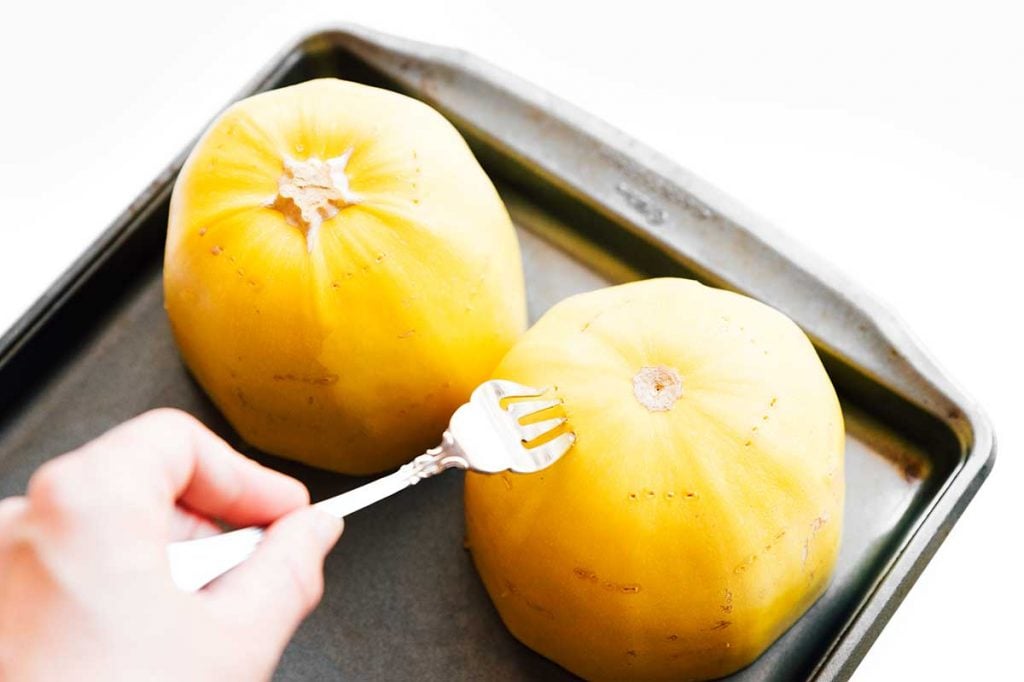
Next up, cook it! There are many ways you can cook spaghetti squash. My favorite method is baking it, which bring out the natural sweetness of the squash. To cook spaghetti squash quickly, you can also microwave it! Here are a few easy methods:
Bake: Place discs on a lightly greased sheet and drizzle with a touch of olive oil over the insides of the discs. Bake at 375 degrees F for 45 minutes, or until strands easily pull apart from squash when raked with a fork.
Boil: Submerge discs in boiling water until tender, about 20 to 30 minutes. Though slightly quicker, you’ll lose more water-soluble vitamins with this method.
Microwave: Set discs on a microwave-safe dish and fill the dish with about an inch of water. Microwave on high for 10 minutes, or until strands easily pull apart from squash, flipping the pieces at 5 minutes.
Crock-Pot: Plop the whole squash in a crock pot, poke some holes in it with a fork, cover with about 2 cups of water and set on low for 6 to 8 hours. Slit open, remove seeds, and rake out spaghetti.
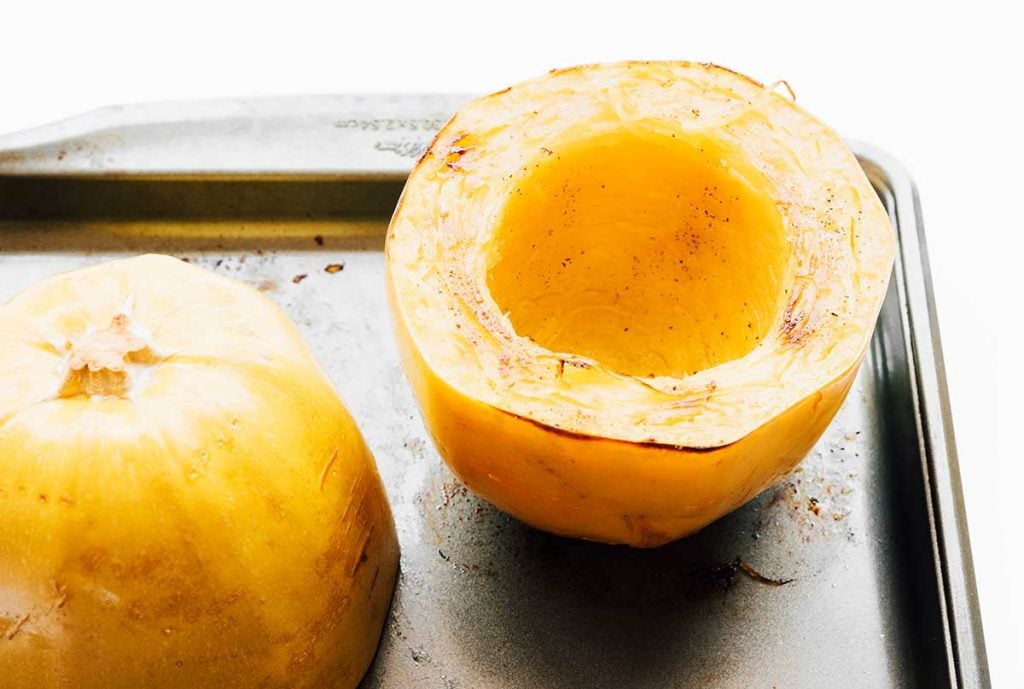
After cooking, allow squash to cool just enough to touch, then gently rake at the inside with a fork to release the spaghetti strands.
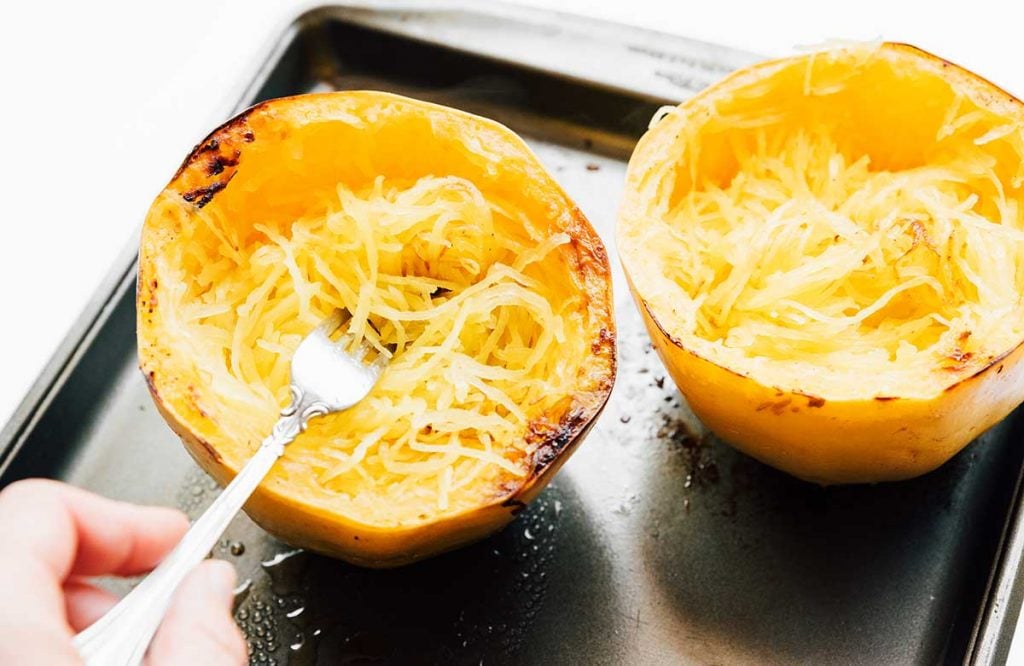
How to store spaghetti squash
Uncooked spaghetti squash that is stored in a cool (60 degrees F) and dry place can stay good for up to 3 months. Once cut, store in an airtight container in the fridge.
You can also freeze leftover cooked spaghetti squash. Just portion the “noodles” out into sandwich bags, squeeze out the air, and freeze! Simple thaw a few portions at room temperature when you’re ready to serve.
Best Spaghetti Squash Recipes
- Spaghetti Squash Mac and Cheese
- Goat Cheese & Mushroom Spaghetti Squash
- Pesto Spaghetti Squash Bowls
- Spaghetti Squash Burrito Bowls
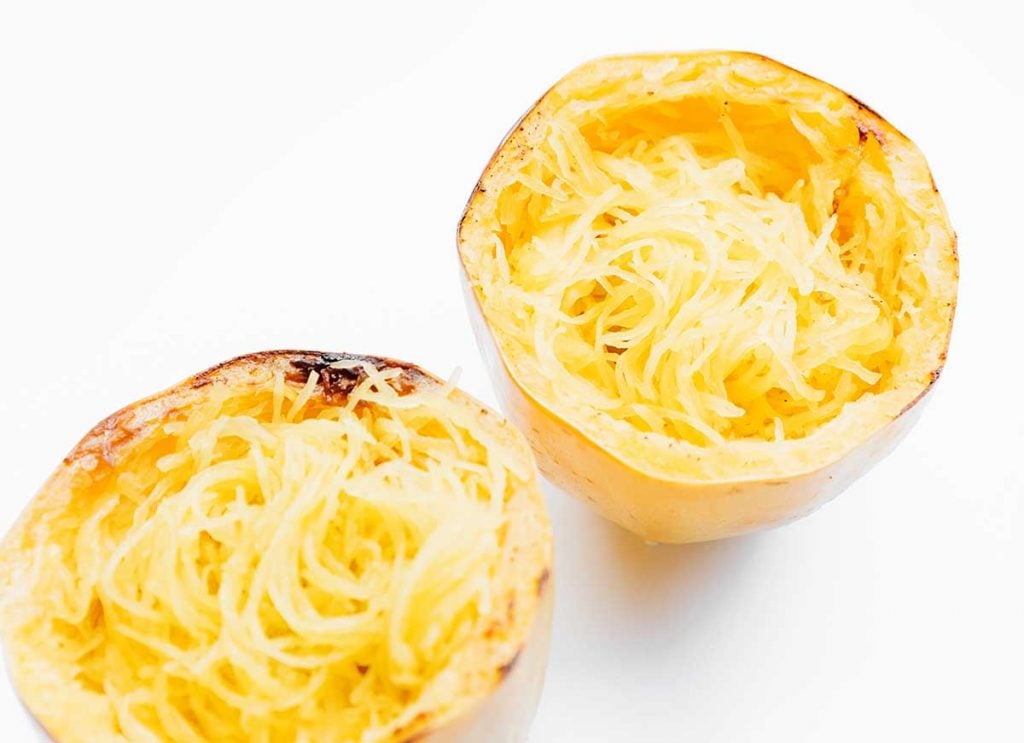
Spaghetti squash nutrition information
Spaghetti squash is an incredibly healthy type of squash (even dogs can eat spaghetti squash!). Here is the nutrition information per 2 cups of cooked spaghetti squash.
- Calories: 84
- Carbohydrates: 20g
- Fiber: 4g, 18% Daily Value (DV)
- Protein: 2g
- Fat: 0g
- 18% DV of Vitamin C: A water-soluble vitamin that acts as an antioxidant to fight against potentially damaging free radicals (molecules with unshared electrons that float around wreaking havoc) and an important cofactor in collagen synthesis.
- 16% DV of Vitamin B6 (Pyridoxine): A water-soluble vitamin that works behind the scenes as a coenzyme in many important reactions within your body, including protein metabolism and red blood cell formation, among countless other functions.
- 16% DV of Manganese: A trace element that plays a role in healthy brain and nervous system function.
- 12% DV of Niacin (Vitamin B3): A water-soluble vitamin that is a precursor to NAD, a coenzyme important for breakdown of macronutrients into fuel. Niacin may also reduce risk of cardiovascular disease.
- 10% DV of Potassium: A key mineral and electrolyte involved in countless processes, including healthy nervous system functioning and contraction of the heart and muscles.
- 6% DV of Vitamin A: Provides the provitamin version of this fat-soluble vitamin, meaning it comes from a plant source and your body converts the plant pigment into active Vitamin A. It is essential in many components of healthy vision, as well as immunity and cell growth/differentiation.
- 6% DV of Iron: A major component of hemoglobin, the proteins that make up red blood cells and carry oxygen around the body. This is a non-heme source, meaning it does not come from an animal. It is not absorbed as well as heme iron.
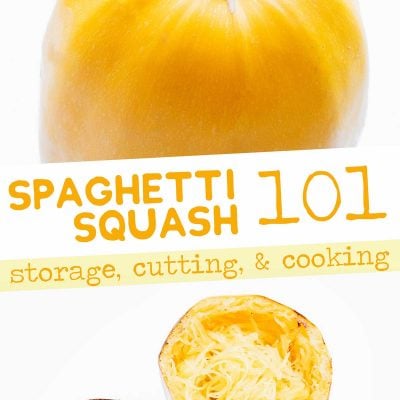
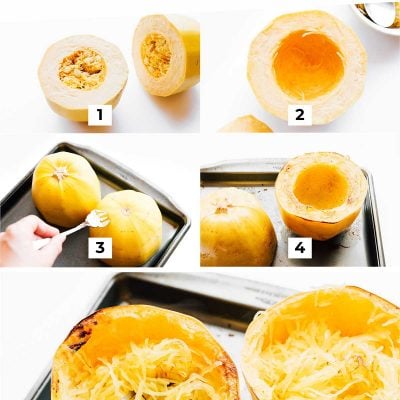


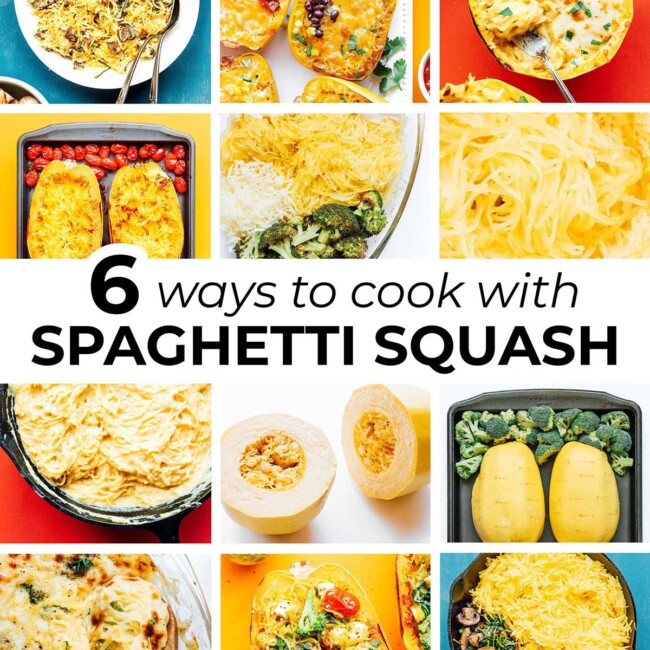
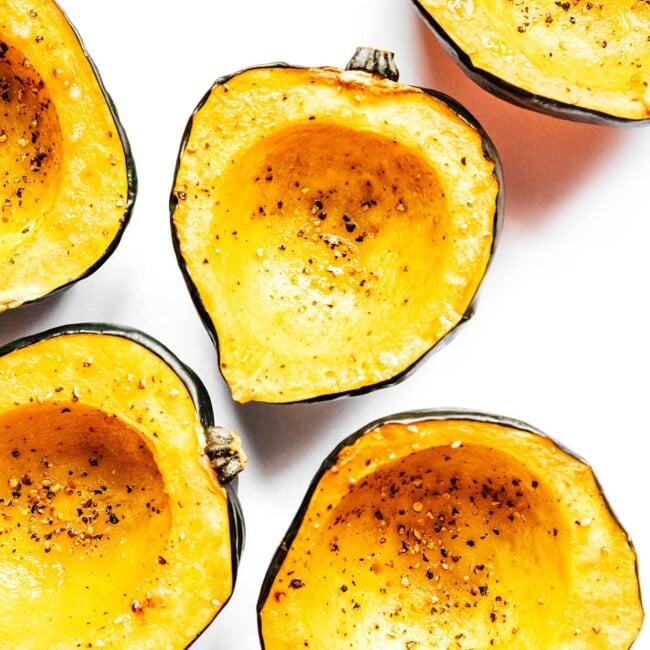
Yes says
This might be a silly question… can you cook spaghetti squash like any other type of squash? For example cut it into cubes and cook on the stovetop, or is it only good for noodles? Thanks.
Sarah says
That’s a good question! I’ve only ever made noodles from it, and I don’t think the texture would keep them held together in cubes. I think they would probably noodle-ify once cooked.
Victor says
Excellent ideas. I can’t wait to try them. Any advise for sauces to use with this squash?
Sarah says
I love it with alfredo, marinara, or pesto!
Deborah Boardman says
I live in South Africa – is Spaghetti Squash the same as butternut Squash?
Sarah says
Hi Deborah! No, spaghetti squash is yellow and oval shaped, with stringy insides. Butternut is oblong with a solid orange center. You may have trouble finding it in some places, though I’m not sure about SA.
Victor says
Sarah,
These tips were excellent. Much better result than the many ways I have tried in the past. No more soggy squash, yes! Nice job Sarah.
Sarah says
Nice! So happy to hear it, Victor! 😀
Joan says
How long will a spaghetti squash casserole last in the fridge ?
Sarah says
About 4 to 5 days! 😀
Laural says
Do you need to shred cooked spaghetti squash if you want to make it ahead of time and refrigerate? Can you just cook it and wrap it to be reheated and shredded later?
Sarah says
You should be able to store it unshredded! 😀
Monica says
13×9 Glass cake pan.
Butter & brown sugar
Plastic wrap
Cut Speghetti squash lengthwise, de-sead, and place open side up.
Place 2 tablespoons butter and a sprinkle or 3 of brown sugar.
Cover with plastic wrap.
Cook on high in microwave for 20-25 minutes.
Let set 5 minutes.
Unwrap and using a fork remove speghetti
Jeff says
Oh my God this spaghetti squash is off the easy for cheesy low in carbs low in fat high in fiber not going to plug you up like some pasta I’m 57 and I just discovered this my friend told me about it 20 years ago and I didn’t believe him the older I get the less that I realized that I know when I was 20 I new everything